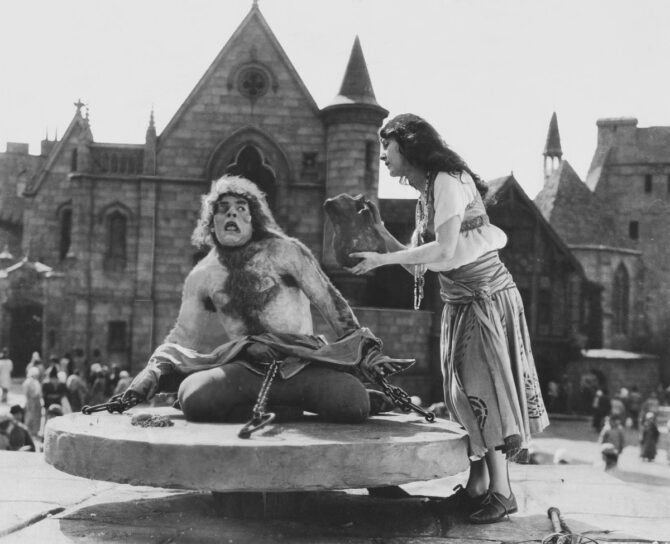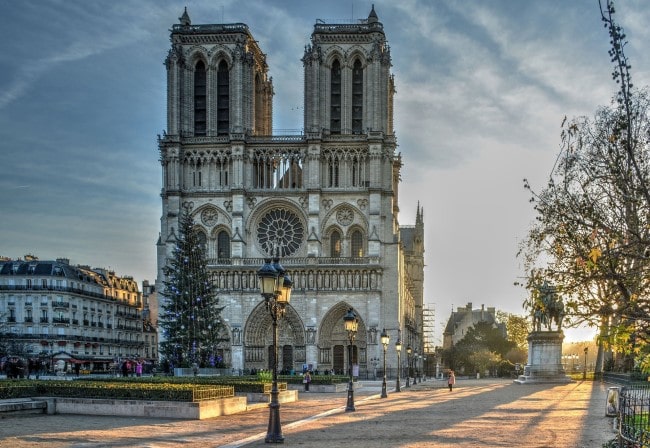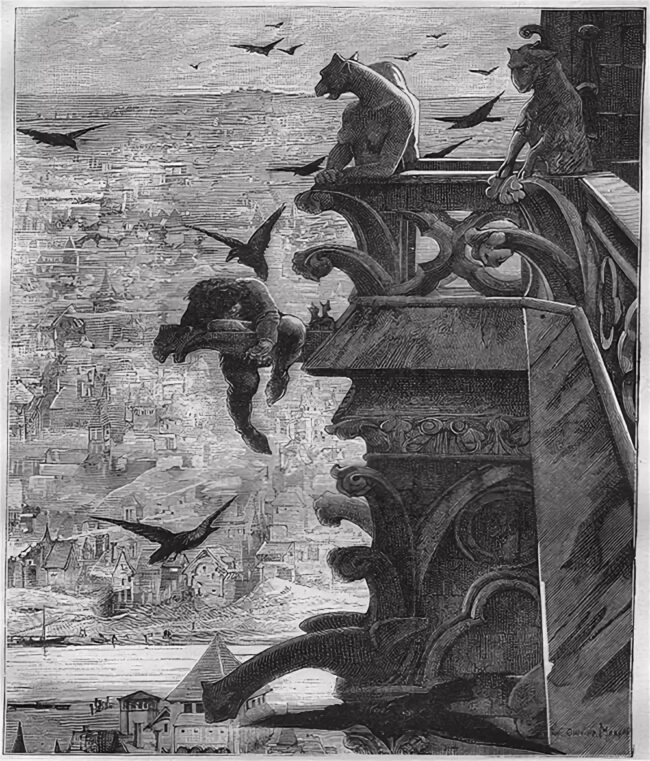How Did the Hunchback of Notre Dame Get His Name?

France has just celebrated the reopening of its iconic cathedral, Notre Dame, with a ceremony that brought together leaders from around the world. The cathedral dates back to the 12th century, but did you know that 200 years ago Victor Hugo helped save it?
Notre Dame was so badly damaged during the 1830 revolution that some thought it should be demolished. Then a year later, The Hunchback of Notre-Dame was published, a novel that championed historic preservation and particularly the Gothic architecture of Notre Dame. It sparked renewed interest in the cathedral and a national movement to restore it to its former glory.
The novel’s central character is the hunchback, one of the most famous characters in French literature. He is known for his terrible deformities, his love for Esmerelda, and his unusual name. But where did “Quasimodo” come from?
From the Catholic religious calendar! Let’s let Victor Hugo tell the story.

Notre-Dame Cathedral. Photo: LeifLinding, Pixabay
One fine morning, on Quasimodo Sunday, a living creature had been deposited in the church of Notre-Dame, on the wooden bed where it was customary to expose foundlings for public charity. Whoever cared to take them did so.
The “little monster” was, in fact, not a new-born child. It was a very lively little mass, imprisoned in its linen sack, with a head projecting. That head was deformed enough; one beheld only a forest of red hair, one eye, a mouth, and teeth. The eye wept, the mouth cried, and the teeth seemed to ask only to be allowed to bite.
A young priest approached. Claude Frollo had been destined from infancy to the ecclesiastical profession. At the age of twenty he was a priest and served as the youngest of the chaplains of Notre-Dame.
At the moment when he was returning from saying his mass, his attention had been attracted by a group of old women chattering around the bed for foundlings.
For several minutes, the young priest listened. Then he thrust the crowd silently aside, scrutinized the “little magician,” and stretched out his hand upon him.
“I adopt this child,” said the priest.
He baptized his adopted child, and gave him the name of Quasimodo, either because he desired thereby to mark the day when he had found him, or because he wished to designate by that name to what a degree the poor little creature was incomplete.

Illustration from Victor Hugo et son temps (1881). Public domain
But if the hunchback was named after the day he was found, what exactly is Quasimodo Sunday, and why is it called that?
Quasimodo Sunday is the third of three holy days that follow one another. First comes Palm Sunday, followed a week later by Easter Sunday, followed a week later by Quasimodo Sunday.
Quasimodo Sunday day is when a special ceremony is held for the newly baptized. The traditional Latin liturgy on that day begins Quasi modo géntiti infantés…(“As newborn babes…”) Hence the day’s name, though in some countries it may also be called White Sunday, Bright Sunday, or Divine Mercy Sunday.
But in the France of Victor Hugo’s day it was called Quasimodo Sunday, thus giving his character one of the most famous names in French literature.

Notre-Dame during the renovation of 1845-1863. Émile Harrouart, around 1860 – Musée Carnavalet
Lead photo credit : The Hunchback of Notre Dame (1923). Public domain
More in French literature, notre dame, Quasimodo, victor hugo


